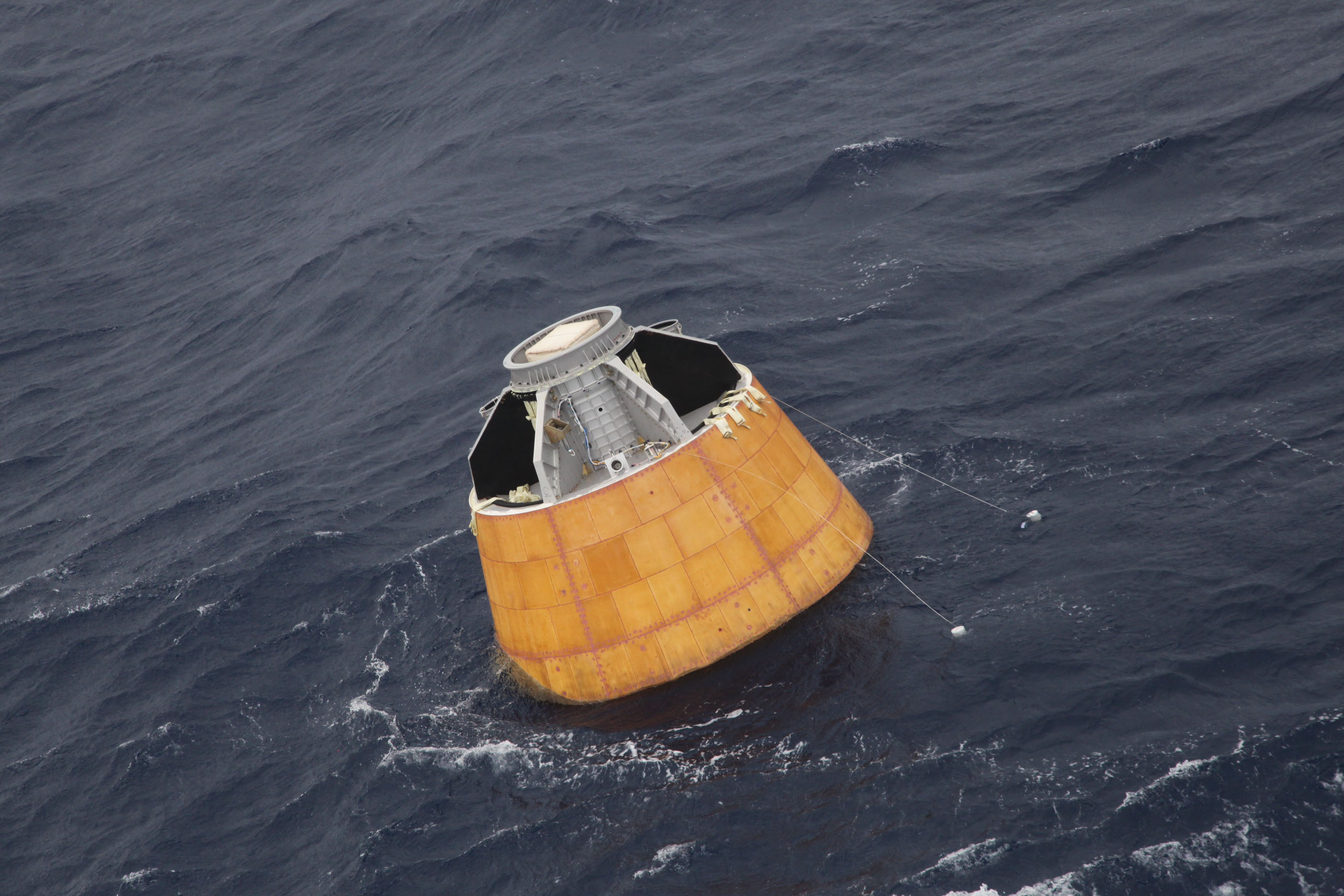|

With the success of its prototype crew capsule, ISRO is now one step closer to venture into a human space flight programme.
GSLV MK III is the heaviest launch vehicle ISRO has ever made, weighing 630.5 tonnes with two active solid and liquid propulsion
stages, S 200 and L 110, respectively. The rocket was also equipped with a cryogenic engine C 25 X, but only as a passive stage. The
passive stage was incorporated to simulate future missions involving heavier payloads and replicated the CE20 engine with
liquid nitrogen used as the simulated propellant in lieu of the liquid hydrogen and liquid oxygen propellants.
The rocket lifted off from the second launch pad of the Satish Dhawan Space Centre at Sriharikota at 0930 hrs IST after
a 24-hour countdown that commenced on 17th morning. The crew module separated from the rocket at an altitude of 126 km and
then re-entered into the earth’s atmosphere at 80 km. It then followed an uncontrolled trajectory into the Bay of Bengal about
180 km off the Andaman Nicobar Islands, where it was recovered with the help of the Indian Coast Guard. The Crew Module (CM)
weighing 3.73 tonnes separated from the rocket after about 325 seconds after the lift-off from the launch pad. The flight also
tested the parachute deployment system of the CM which has to work in a cluster formation to slow down
the module and reduce atmospheric friction and thermal corrosion during its free fall back to the surface.
The text book flight validated the complex parachute deployment and has paved way for the much envisaged re-entry
technology for a manned module based on a parachute aided deceleration system.
ISRO Chief Dr K Radhakrishnan termed the success as a significant day in India’s space programme, stating, “We have completed
the first experimental test-flight of GSLV Mark III. The performance of solid and liquid propulsion stages happened as expected.
The crew module has plunged into the sea.
The next developmental flight of the launch vehicle will be done in the next two years”.
The ISRO Chief, while addressing the 50th Foundation Day of the Institute for Defence Studies and Analyses (IDSA)
on November 11, 2014, had expressed that India while developing the cryogenic engine indigenously needs to improve the
capacity of its launch vehicles and that ISRO was targeting to achieve 12 tonnes launch capability in the decades to come.
Today, only the USA, Russia and the European Union
can launch satellites weighing in excess of 10 tonnes while China has achieved capability of 5.5 tonnes.
With this launch, ISRO is now in a position to put heavier payloads in the range of 10 tonnes in the Low Earth Orbit (LEO)
and in excess of four tonnes in the geosynchronous transfer orbit.
ISRO has had a very fruitful 2014 with multifarious successes that saw successful flight-testing of the indigenous cryogenic
upper stage on board GSLV D-5 and; the record-breaking ‘Mangalyaan’ MOM (Mars Orbiter Mission) which surprised the whole world and
is still orbiting Mars, collecting important scientific data of the Planet. With successful back-to-back launches last year, coupled
with low cost of production,
ISRO is emerging as a strong competitor in the mega-million dollar international space market.

CARE experiment was vital for the validation of re-entry manoeuvre with a life-size replica of a crew module and while
the Indian government has yet to formally approve any manned space flight, the ISRO is on track to show its capability to do
so in the next couple of years. A manned space flight will further consolidate India’s position in the elite club of space faring
nations. It will also create new opportunities in terms of economic growth. The acquired technology
could also be exploited to address the country’s security concerns through the medium of space.
Another important aspect of the December 18 GSLV MK-III launch was to test its capability to take the passive cryogenic
engine to the desired altitude wherein the active engine would have taken over after the burn out of the first two stages,
comprising a core motor with solid propellant and four strap-on motors each with hypergolic liquid propellants in the first
stage and purely hypergolic liquid propellants in the second stage. Incidentally, the indigenous third stage cryogenic engine
also uses liquid oxygen (LOX) as the oxidizer
and liquid hydrogen (LH2) as fuel which was successfully tested with GSLV D-5 on January 5, 2014.
Now, with the success of the December 18 launch and the three-stage GSLV’s flight profile having been worked out, ISRO
is purposefully moving towards achieving its
goal of launching much heavier payloads in geosynchronous orbits, as also moving closer towards realising its dreams of
manned space flights.
But, much would depend on the actual success of the orbital flight of GSLV MK-III, planned for launch during 2016-17 with
an active indigenously built cryogenic engine.
|